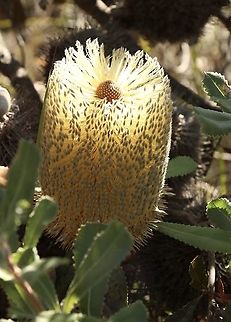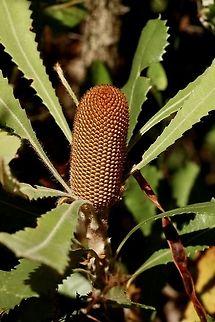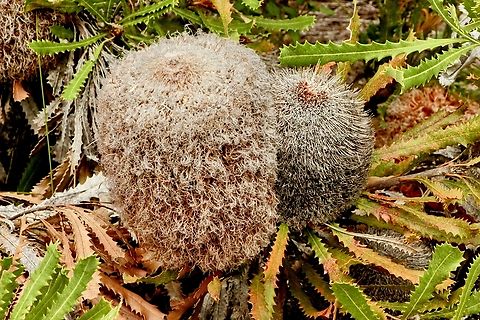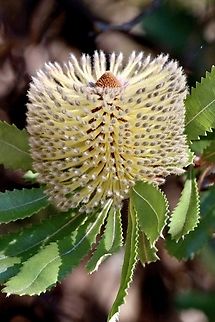
Appearance
"Banksia ornata" is a shrub that typically grows to a height of about 3 m but does not form a lignotuber. It has thin grey bark and stems that are hairy at first, later glabrous. The leaves are narrow egg-shaped with the narrower end towards the base, or wedge-shaped, 30–100 mm long and 4–25 mm wide on a petiole 5–10 mm long.The flowers are cream-coloured and arranged in a broadly cylindrical spike 50–110 mm long and 70–80 mm wide when the flowers open. There are hairy involucral bracts at the base of the spike but they fall off before the flowers open. The perianth is 30–35 mm long and the pistil 35–38 mm long and slightly curved. Flowering occurs in most months but mainly in winter and spring and there are up to fifty elliptic follicles 15–20 mm long and 10–15 mm wide in each spike, surrounded by the remains of the old flowers.

Naming
"Banksia ornata" was first formally described in 1854 by Carl Meissner from an unpublished description by Ferdinand von Mueller. The description was published in " Linnaea: ein Journal für die Botanik in ihrem ganzen Umfange, oder Beiträge zur Pflanzenkunde". The specific epithet is from the Latin word "ornatus" meaning "decorated", referring to the flowers and leaves.
Distribution
Desert banksia is common in western Victoria and in South Australia. In South Australia it is found in the south-east of the state south of Nuriootpa, including on the lower Eyre Peninsula, Kangaroo Island and east of Adelaide. It is confined to the far west of Victoria, mainly between Murrayville and the Grampians. It tends to grow in mallee and heathland environments in sandy, well-drained soils.
Habitat
Desert banksia is common in western Victoria and in South Australia. In South Australia it is found in the south-east of the state south of Nuriootpa, including on the lower Eyre Peninsula, Kangaroo Island and east of Adelaide. It is confined to the far west of Victoria, mainly between Murrayville and the Grampians. It tends to grow in mallee and heathland environments in sandy, well-drained soils.Nectarivorous birds are attracted to this shrub. Species observed feeding at its flowers include "Anthochaera carunculata", "Melithreptus brevirostris", "Melithreptus lunatus" and "Zosterops lateralis".References:
Some text fragments are auto parsed from Wikipedia.